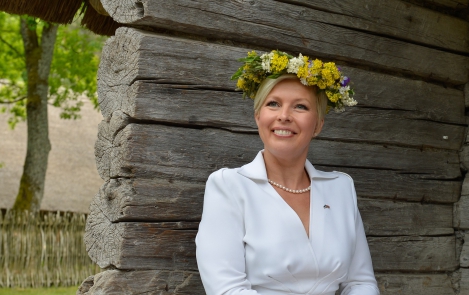-
Reset
+


“Paucity at a time of plenty” - Kodukiri magazine, August 2012
10.08.2012
Driving around the country in summer in Estonia, you find all sorts of wonderful stalls on the side of the road. If it's July, there are bound to be strawberries and blueberries and chanterelles; but August is the true time of plenty: apples, plums, pears, raspberries and anything you can think of that someone might grow in their garden. Sometimes you even see grapes and apricots. You'll find fresh milk straight from the udder, smoked fish, garlands of onion and birch whisks for the sauna. And if you keep your eyes open, you'll even spot signs for cosy home-run cafés and invitations to visit local farms.
A few years ago, I happened to hear a talk given by a representative of the City of Malmö in Sweden about how they had gradually made the shift to almost exclusively local produce (ca 90%) in their social food services throughout the city – schools, kindergartens, nursing and retirement homes, hospitals and military facilities. It got me thinking: why couldn't I try the same thing at home? After all, we'd been stocking our larder with produce from Mulgimaa farmers for years, not to mention making our own jams and juices, filling the freezer with berries and mushrooms we ourselves had picked and getting our eggs and dairy from our neighbours.
If I did find myself in some sprawling supermarket, I started keeping a close eye on what I was buying to make sure it was home-grown. It wasn't easy at first: information about where a product is from is often hidden away on the edge of a label in such tiny text that it's as though the captive ingredients are ashamed of where they've come from! Even buying plain old flour I needed a magnifying glass to decipher the soil in which the wheat had grown. And the cheaper the product, the less clear its origins become. Anyone who cares about their health even a little and tries to keep what they eat free of chemicals and preservatives has a hard time of it. And although more and more unsullied products are appearing on shelves, you often still encounter misleading advertisements and unbelievable ingredients. Take a new chicken and turkey sausage I found designed for kids – not a single gram of meat, but plenty of ground skin, deboned mass and chemical compounds...
But when I started looking around beyond the supermarkets for local produce, I found all sorts of wonderful stuff – goat's milk butter and yoghurt; chemical-free sausages and cheese; black and white bread; and fresh meat that hadn't been pumped full of water or had colours added to it. There were almost a dozen different vegetables I was able to stock up on that would see us through the winter. There was fresh fish, ready to eat. And there was no end of garden produce: lettuce and cucumber and tomatoes, not to mention fresh, fragrant herbs. Inga, the head chef at the president's office, even had this thing going with me as to who would uncover the most exciting but well-hidden secrets of Estonian cooking! Since it's been a while now that we've been serving visitors exclusively Estonian dishes.
But while I love buying local produce from the side of the road, trying to manage on that alone on a daily basis is almost impossible. So why is that even though we have everything we need on our doorstep, you can't get it from your local store and are sometimes forced to seek it out like hidden treasure? "Picking mushrooms and berries and stuff is the easy part," says young hurdler Kaur Kivistik when I run into him one day at a blueberry stall he's set up with his younger brother. "It's selling them that's the hard part." He's been standing on the verge for the better part of half a day holding a sign above his head reading 'BLUEBERRIES'. That's athleticism for you!
You need more than a bit of muscle to set up a decent local store though, let alone an entire chain of them. What you need more than anything else is to find enough like-minded people. Hypermarkets trumpet about their plans to open yet another enormous store, and yet to the best of my knowledge the market leader in Estonia remains the locally owned and run ETK. But they all seem to be cloned from the same strain – one that's interested solely in flooding Estonia with the cheapest stuff from everywhere else in the world. You only have to take a look at stores across the water to see what a difference different choices can make, with far more local produce and considerably better foreign goods, and not always that much more expensive. "That's because quite a few chains in Finland are owned by local farmers and producers," a friend of mine who's just moved back to Estonia explains. "And who's going to be more interested in selling their stuff locally than they are?"
We need a store that sells local food. And by that I don't mean some fancy delicatessen or ecostore – just something selling natural, untarnished, locally sourced stuff. That could easily include produce from neighbouring Latvia, Finland, Russia and Sweden. So where are those salt-of-the-earth farmers and farmers' wives to run them, just like they did back in the 1930s? Perhaps, dear readers, there's a business idea for you right there!



